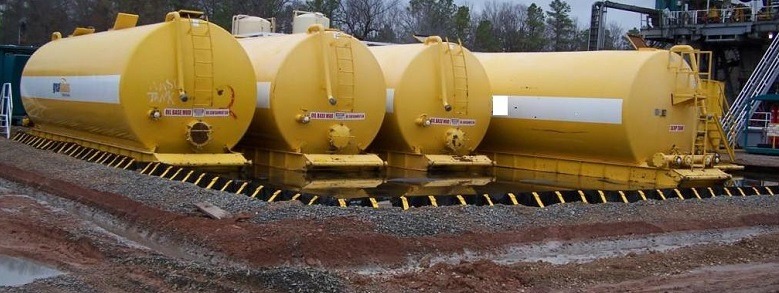Prevention is better than cure, and with that in mind, bunding your fuel tank provides a secondary containment should the worst happen and your tank springs a leak. It’s essential that you consider the capacity of your bund in order for it to be effective. As a general rule of thumb, a bund should have a capacity of 110% of the tank volume. This allows for the addition of foam during an emergency response situation. If you have more than one tank, it’s a good idea to store them together in one bund, this can save considerable space as the bund capacity has to be the larger volume of either 25% of the total of all the tanks, or 110% of the largest tank contained within.
Other factors you need to consider are the design and drainage. There’s no specification on height to floor area, but high walls can impede emergency services. Usually it’s advised to try to keep them below 1.5m. Too low and you risk a leak higher up in the tank being permitted escape, too high and the tank may float as the bund fills up. Creating an enclosed bund may seem like an ideal solution to keeping rainwater out, but you have to keep in mind this will be classified as a confined space when working with the tanks. Lower walled bunds are the most common design (below the 1.5m). It’s important to consider drainage in an open bund, you don’t want some of that carefully calculated capacity being used up by rainwater, but similarly, creating an outlet would defeat the purpose of the bund. The recommended way to dispose of any water collecting in the bund is to install a sump and pump it out for disposal. You can dispose with an authorised liquid waste contractor or, with approval from Water Trade Waste, in the sewerage system.
It is recommended to use reinforced materials for bund construction; the most important factor is to make sure your building material is impervious to the contents of your tank. It’s important to do periodic checks to ensure the integrity of your bund, these checks should include a visual inspection and a test to ensure the structure is water-tight. Constructing a bund away from vehicle areas is a good idea to avoid it being struck.

2022
Visit our oil spill clean up guide
Here we present answers to lots of your questions about Oil Spill clean up. We also cover prevention, health and safety, clean-up, as well as response plans and spill response services.
CHECK IT OUT
![]()


